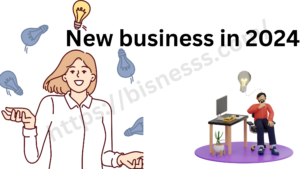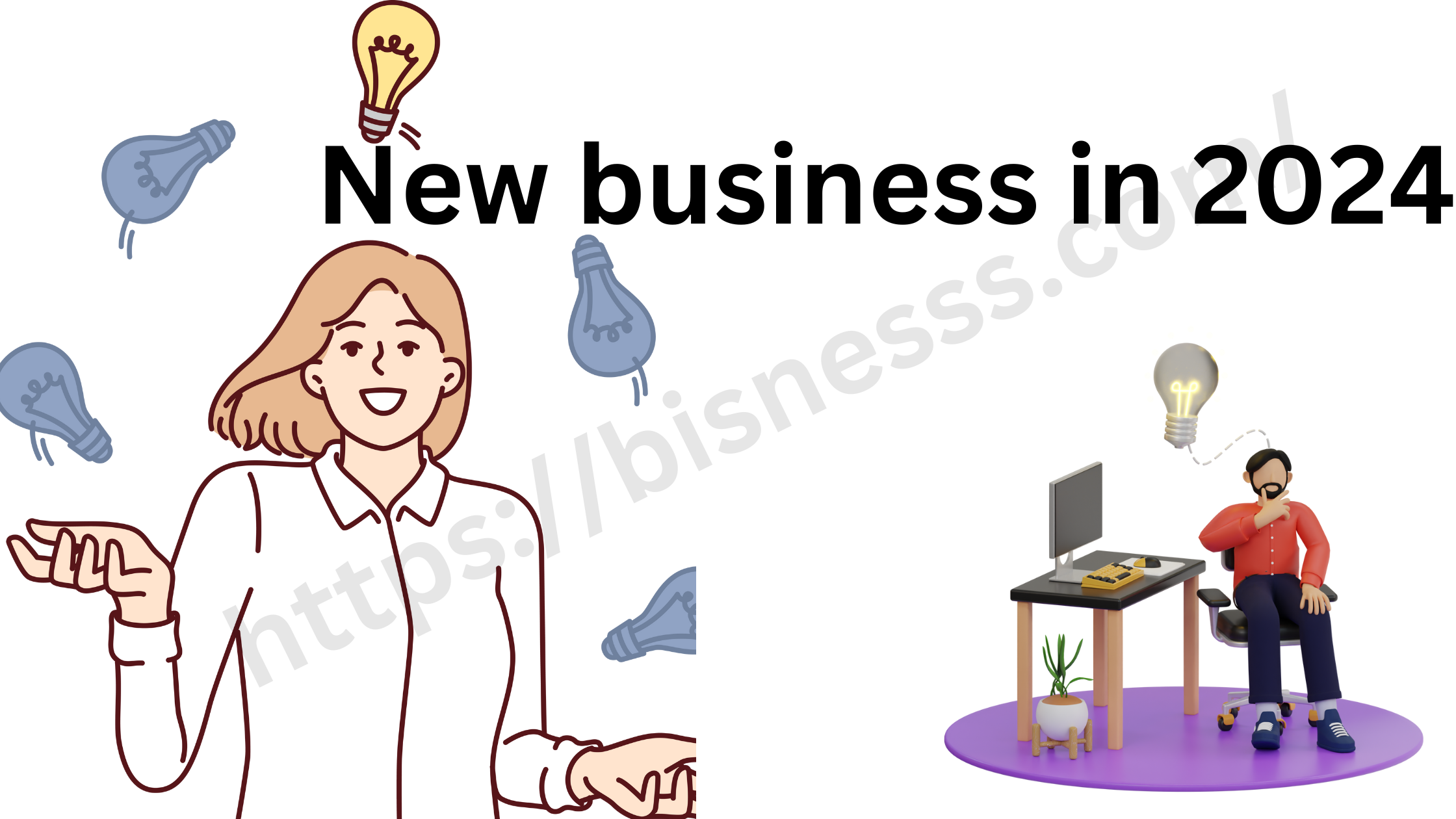New business in 2024 the business landscape continues to evolve, shaped by technological advancements, changing consumer behaviors, and a global focus on sustainability. Entrepreneurs looking to capitalize on emerging trends and address evolving needs are exploring innovative business ideas. Here, we’ll explore a new business concept that aligns with the current trends and demands of 2024. 
GreenTech Solutions: Sustainable Urban Farming
Introduction: As environmental consciousness deepens globally, there is a growing demand for sustainable solutions to address food security and reduce the carbon footprint of traditional agriculture. In 2024, the concept of GreenTech Solutions, specifically focusing on Sustainable Urban Farming, emerges as a promising and impactful business venture.
1. Rationale and Market Demand:
With increasing urbanization and concerns about the environmental impact of conventional agriculture, there is a rising interest in local, sustainable food sources. Sustainable Urban Farming leverages innovative technologies to cultivate fresh produce within urban environments, minimizing transportation emissions and maximizing resource efficiency.
2. Vertical Farming Technology:
The core of this business involves the implementation of vertical farming technology. Vertical farming utilizes stacked layers or vertical racks to grow crops in a controlled indoor environment. This method requires less land, conserves water, and enables year-round production, overcoming traditional agriculture’s seasonal limitations.
3. Smart Agriculture Practices:
Integrating smart agriculture practices enhances efficiency and crop yield. Sensor-based technologies, IoT (Internet of Things) devices, and data analytics provide real-time monitoring of environmental conditions such as temperature, humidity, and nutrient levels. Automated systems can adjust these parameters to optimize crop growth, resulting in higher-quality produce.
4. Hydroponics and Aquaponics Systems:
Hydroponics and aquaponics systems, which grow plants without soil and utilize nutrient-rich water solutions, play a crucial role in Sustainable Urban Farming. These systems are resource-efficient, as they require less water compared to traditional farming methods and eliminate the need for harmful pesticides.
5. Localized Food Production:
The business model focuses on establishing compact, high-tech urban farms strategically located within or near urban centers. This localization reduces the distance between production and consumption, minimizing the environmental impact associated with long transportation routes. Consumers benefit from fresher produce, while the community enjoys increased food security.
6. Subscription-Based Models:
To reach consumers directly, Sustainable Urban Farming can adopt subscription-based models. Customers subscribe to receive regular deliveries of fresh, locally grown produce. This not only creates a steady revenue stream for the business but also fosters a sense of community and sustainability among subscribers.
7. Educational Initiatives:
In addition to food production, the business can engage with the community through educational initiatives. Workshops, school programs, and community outreach can raise awareness about sustainable agriculture, healthy eating habits, and the environmental impact of food choices.
8. Integration with Smart Cities:
Collaborating with smart city initiatives allows Sustainable Urban Farming to become an integral part of urban planning. Integration with smart city infrastructure can facilitate waste reduction, energy efficiency, and data-driven decision-making, contributing to the overall sustainability of urban environments.
9. Corporate Partnerships:
Collaborations with restaurants, grocery stores, and corporate offices can create additional revenue streams. Offering a local and sustainable supply of fresh produce can appeal to businesses committed to environmentally friendly practices.
10. Investment in R&D:
To stay at the forefront of GreenTech innovation, ongoing investment in research and development is essential. Keeping an eye on advancements in agricultural technology, sustainable materials, and energy-efficient systems ensures the business remains competitive and adaptable to evolving market trends.
Challenges and Mitigation:
1. Initial Capital Investment: Establishing Sustainable Urban Farming ventures requires a significant upfront investment in infrastructure, technology, and research. Securing funding through grants, government incentives for sustainable initiatives, or private investors committed to environmental impact can help mitigate this challenge. 2. Technical Expertise: The implementation of advanced agricultural technologies demands specialized knowledge. Hiring experts in agritech, environmental science, and data analytics is crucial. Collaborating with research institutions or universities can also provide access to cutting-edge expertise. 3. Regulatory Compliance: Navigating the complex landscape of agricultural regulations and urban planning permissions is a challenge. Establishing strong relationships with local authorities, environmental agencies, and community stakeholders can streamline the regulatory process. 4. Consumer Education: Educating consumers about the benefits of Sustainable Urban Farming and dispelling myths or misconceptions is essential. Marketing efforts should highlight the positive environmental impact, nutritional benefits, and community engagement aspects of the business. Must Read…
Conclusion:
In 2024, the business landscape is characterized by a growing emphasis on sustainability, technology integration, and addressing urban challenges. Sustainable Urban Farming, as a GreenTech solution, aligns with these trends by providing a local, environmentally friendly, and technologically advanced approach to food production. The integration of smart agriculture practices, vertical farming technologies, and community engagement positions this business concept as not only economically viable but also as a catalyst for positive environmental and social change. As consumers increasingly prioritize sustainable choices, businesses that align with these values stand to thrive in the evolving marketplace of 2024.

